Almost exactly 10 years after my first visit, I have finally made it back to Japan. Call me a basic bitch, but like so many other people, it’s one of my favourite places in the world. And whilst 18 days there wasn’t nearly enough, I did use this time to get some serious eating done. Some of it is Michelin-recommended (though none of them are Michelin-starred – I prefer to spend my time abroad exploring local cuisine that I can’t get back home), some of it is internet-famous, and a lot of it is just tasty-looking things I happened to run across. And with Japan being what it is, almost all of it is delicious. And don’t even get me started on the konbini (convenience store) food – iykyk, and I could start a whole other blog reviewing its many delights.
Tajimaya Ryokan
4266 Magome, Nakatsugawa
Gifu 508-0502, Japan
https://www.kinosaki-tajimaya.co.jp/en/
It may have been the stinkiest of summers when I went to Japan, but I was not going to let that stop me from having the traditional onsen experience, ryokan included. And the best part of the ryokan experience? Undoubtedly the kaseki meal – a multi-course, traditional Japanese dinner of seasonal local ingredients. We stayed at Tajimaya in Kinosaki, which aside from being a gorgeous ryokan in a gorgeous old-fashioned onsen town, also included dinner and breakfast for about 22,000 yen per person, per night. Yes, it is slightly on the pricey side, but for the quality of the food and hospitality, as well as the uniqueness of the experience, I would consider this a must-do.
Dinner
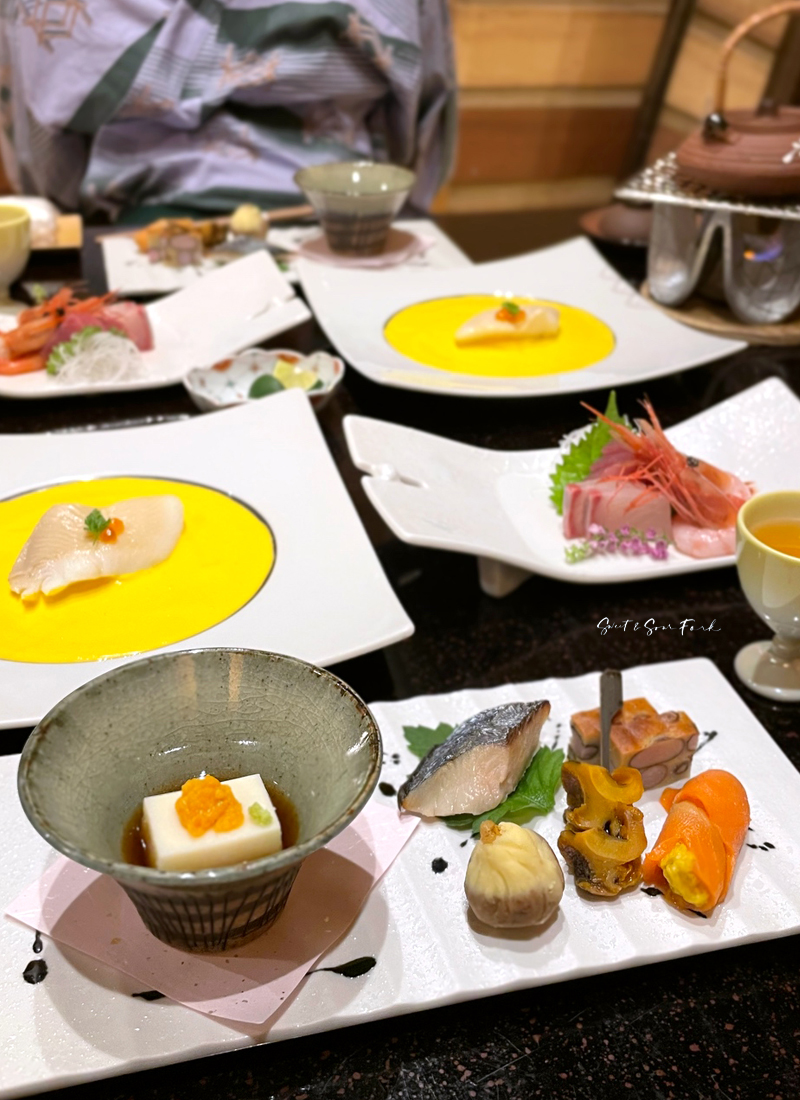
Dinner started promptly at 6pm, and we came back from bathing to the table in our room set up with the most stunning spread of delicate treats. Now, our hostess’ English was not flawless (though still quite impressive!), so we didn’t get the most comprehensive explanation of the food. And given my palate is nowhere near good enough to identify all the unfamiliar ingredients, there will be quite a lot of guesswork and dodgy descriptions going forward.

So first up was a bunch of little nibbles, mostly served cold. There was a firm piece of white fish, a sweet taro dumpling, smoked salmon wrapped around some kind of pickled vegetable, some kind of little savoury cake (maybe soy-based?), and a little skewer of octopus, marinated in a sweet yet savoury sauce.

There was also a little cube of what I had initially though to be tofu, but turned out to be some kind of delicate starchy cake (maybe bracken?) in a light shoyu broth. The obligatory sashimi was there, and included the most amazingly sweet prawns. For those who prefer their fish cooked, there was a also an elegantly grilled piece of white fish, served on a blanket of lightly creamy sauce.
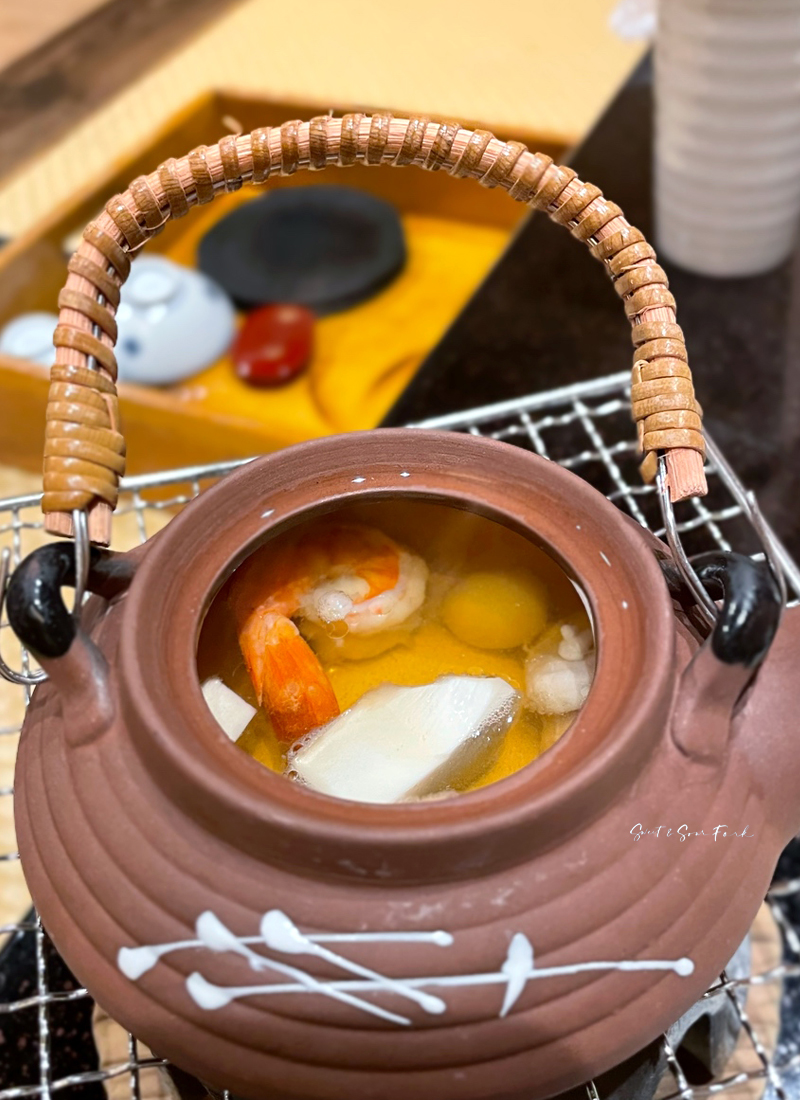
On the table was a mini brazier, which will see quite a bit of use not only tonight, but tomorrow morning. At the moment, it was heating up an earthenware kettle, which turned out to contain the most marvellous seafood and chicken broth. It was so clean and light, yet was imbued with an intensely umami flavour, with the added earthy complexity of wild mushrooms and herbs. Absolute stunner.
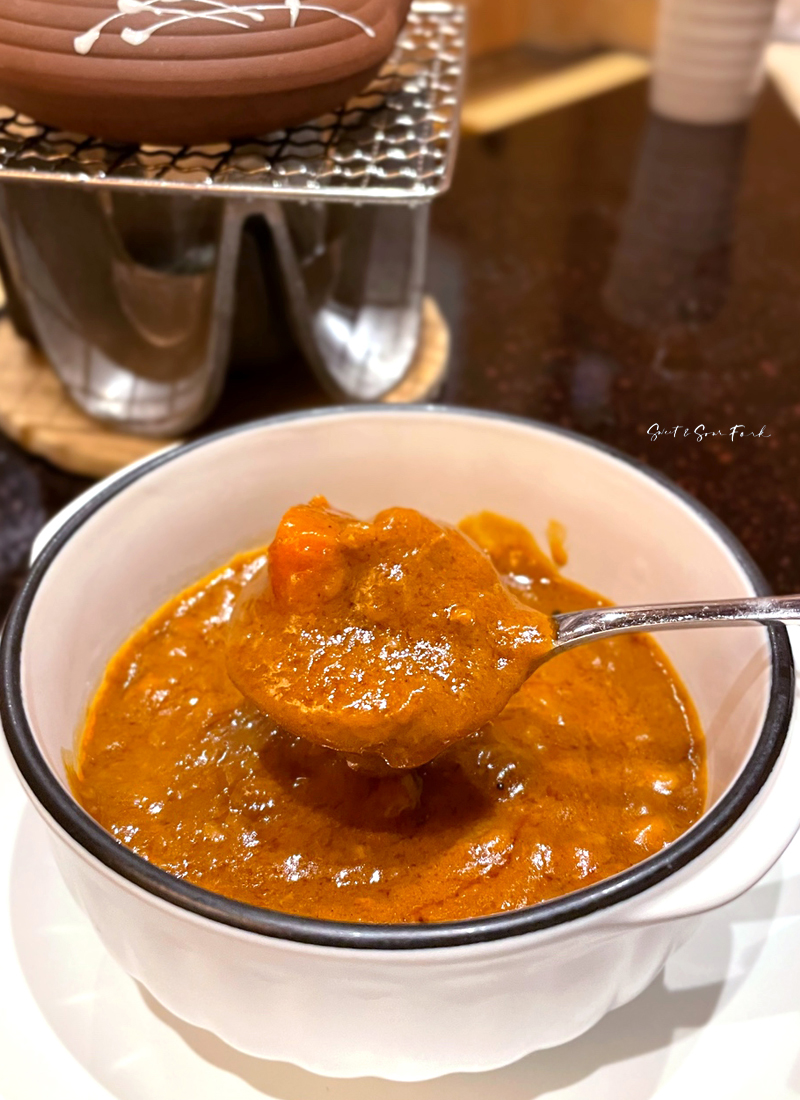
The next course was a super thick beef stew, which to be honest, felt pretty out of place in the procession. Don’t get me wrong – it was deliciously rich, with a depth of flavour reminiscent of curry, and you can even pour some more cream on top to really live your best life. It’s just that the heaviness of it was whiplash after the previous delicate courses, and also an odd prelude to the more hearty dishes to come.
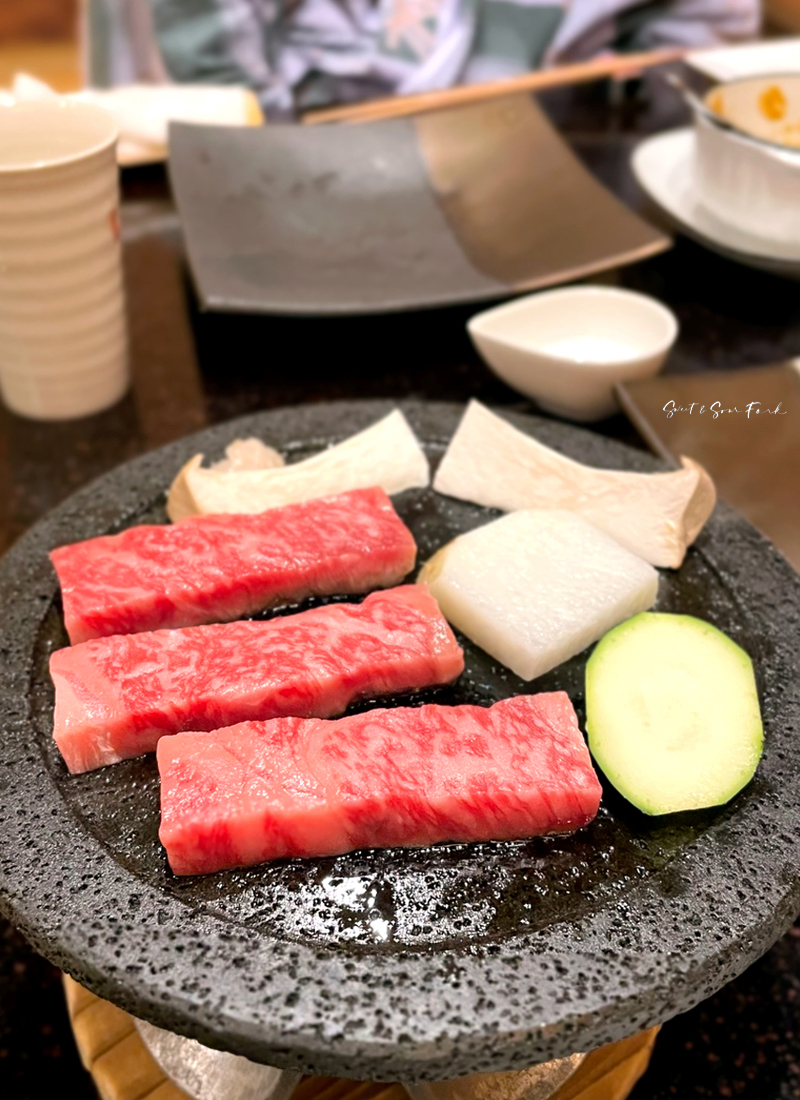
The centrepiece of the meal were the fillets of Tajima wagyu, cooked on a little stone plate right at the table. As Kobe beef is essentially the best of the best wagyu from the Tajima bloodline, it’s not surprising that this was the fattiest, most succulent piece of beef I’ve ever eaten. As tempting as it is to eat it straight off the grill however, remember to let the meat rest so that the juices can redistribute, to allow the flavour and texture to reach its full potential.
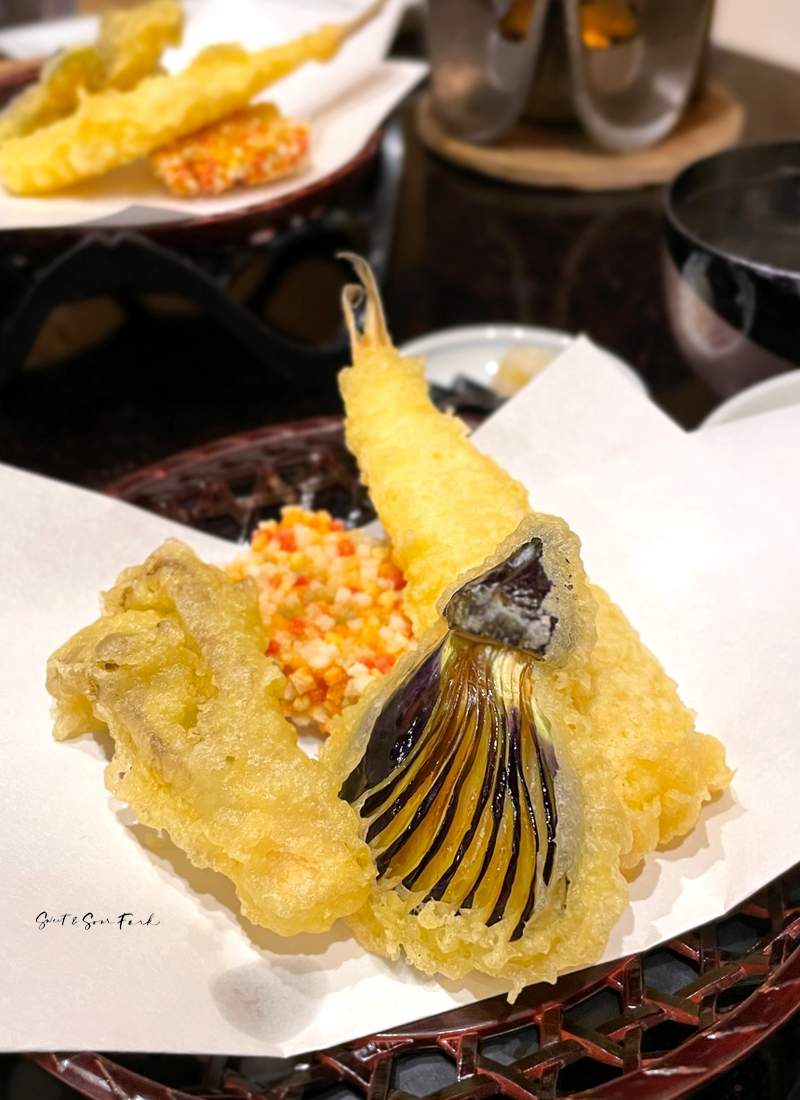
The tempura on the other hand was pretty ordinary. The ingredients were fresh, but the batter leaned towards greasy. Unsurprising I suppose, given they’re cooking for the entire ryokan at the same time.

Not to be under-estimated is the side of perfectly fluffy white rice, which is super moreish with the assorted pickles, all washed down with a clean dashi broth and a couple of fish cake dumplings.
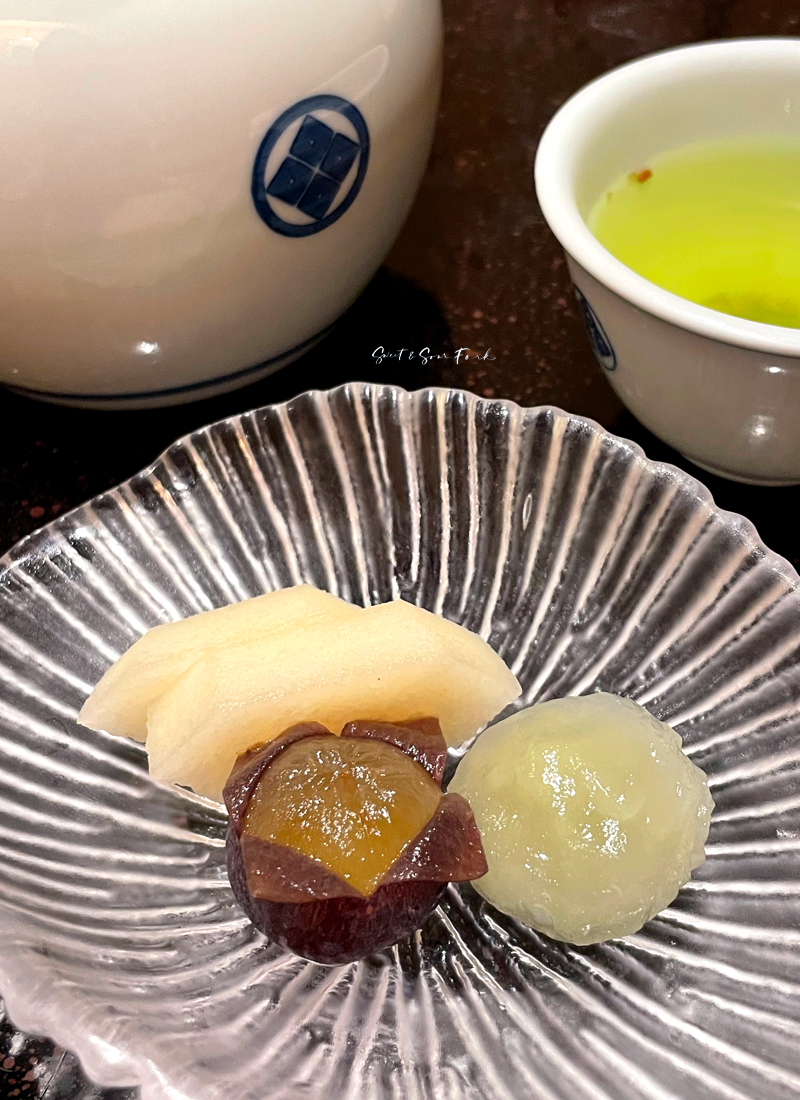
Just as well that dessert was light, because I was well and truly full by this point. Alongside a couple of crisp slices of pear was the most flavoursome grape I’ve ever had, as well as a chewy piece of mochi, and a cup of the most vibrant genmaicha to settle the stomach.
Breakfast
Bathing is hard work, so the next morning we were treated to a sumptuous breakfast spread.
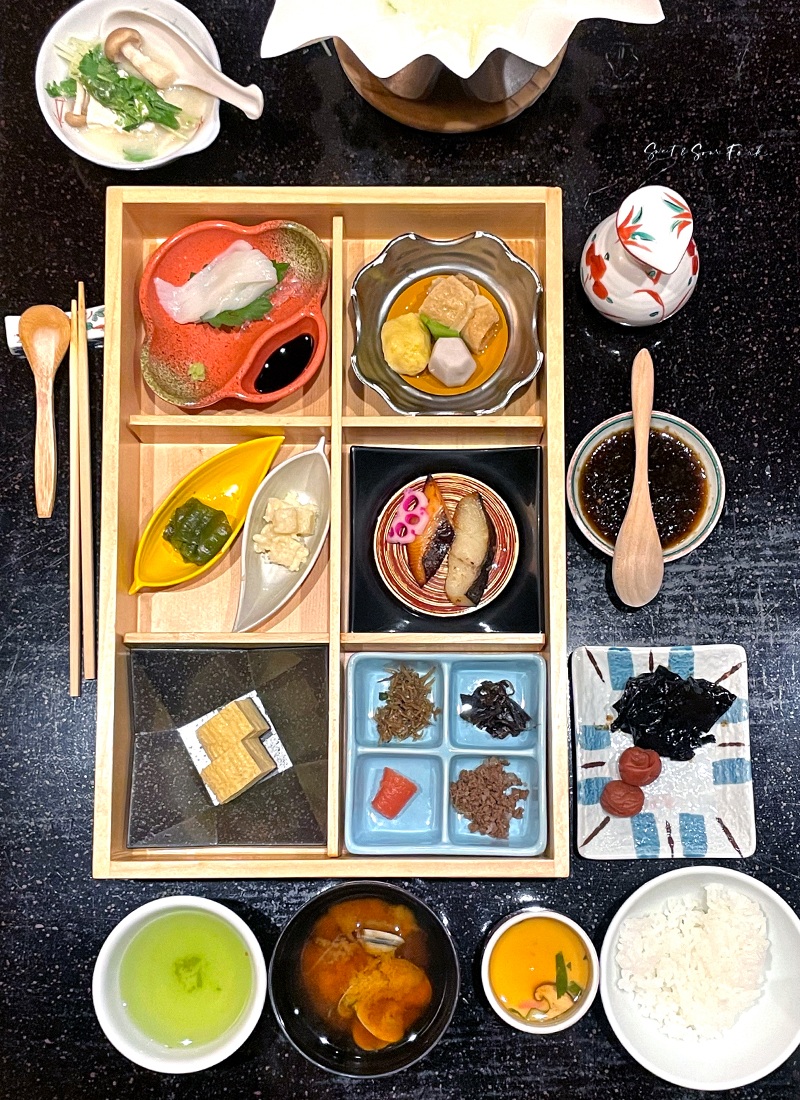
To call this a traditional Japanese breakfast would be like calling last night’s Tajima beef a hamburger patty – correct on principle but gives no credit to the luxury or quality of the ingredients. Alongside the traditional rice, pickles, and miso soup (even that was glammed with clams), there was a boggling array of raw, stewed, marinated, and grilled things to snack on.
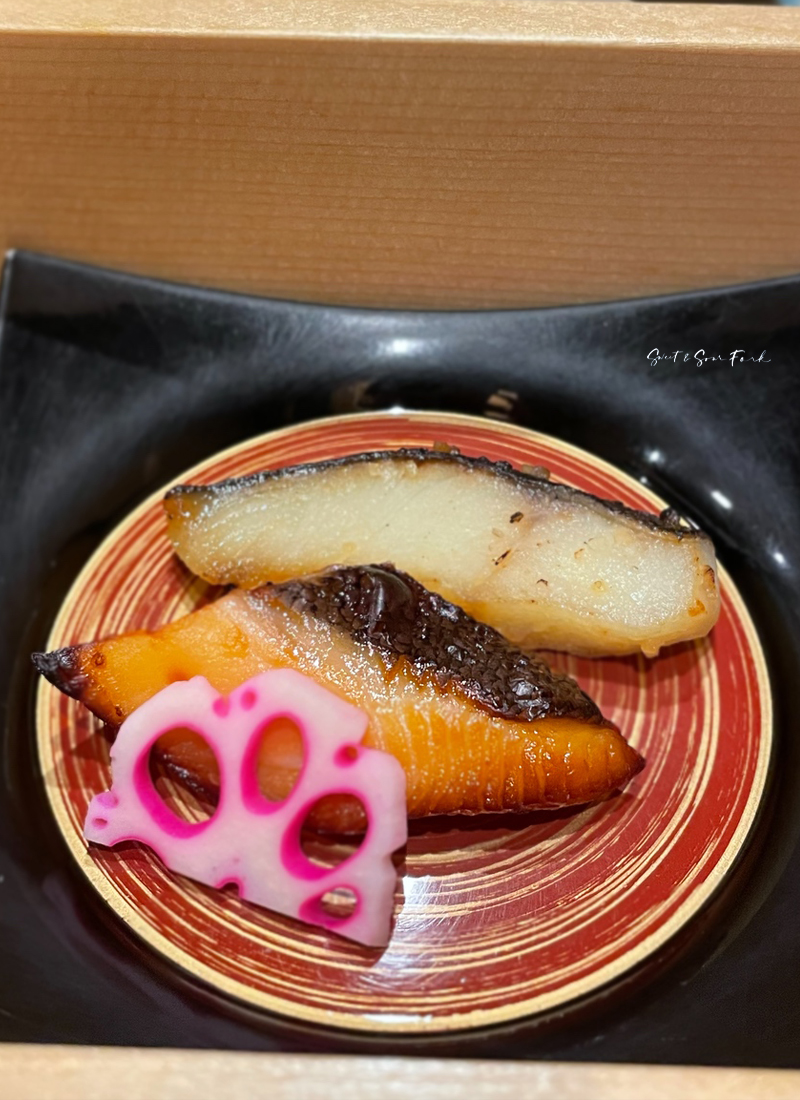
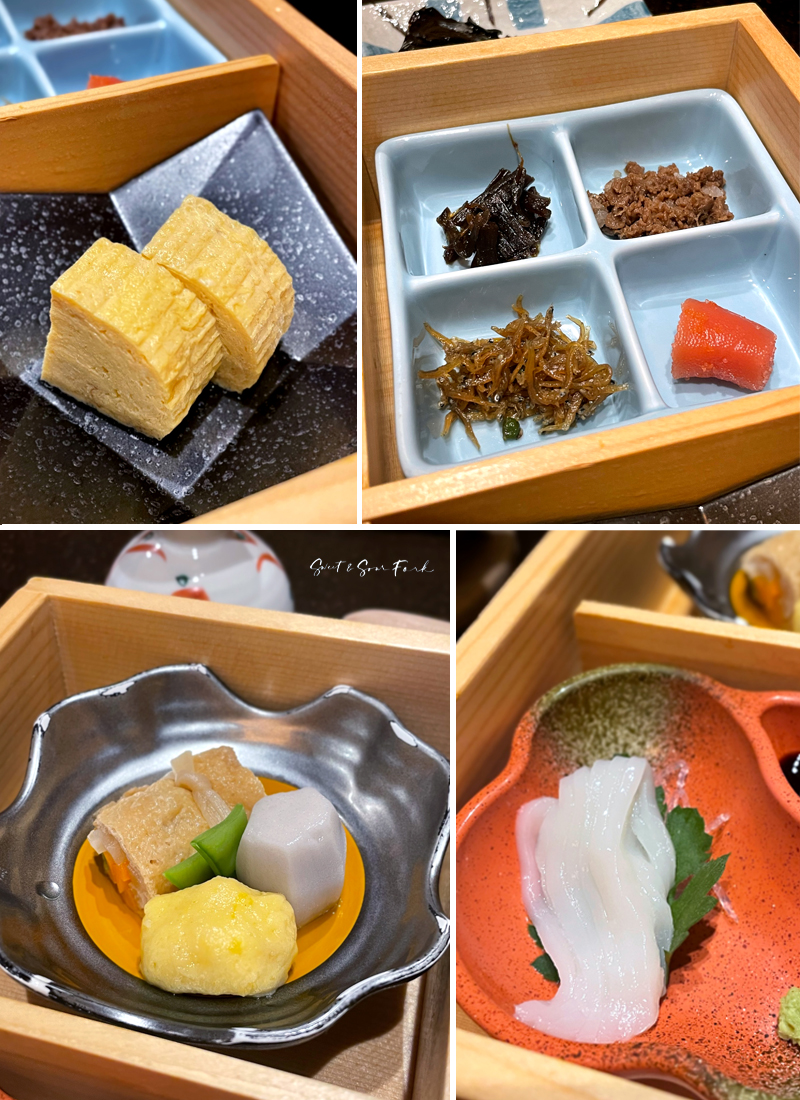
There was, of course, the traditional grilled fish – in this case, mackerel and salmon. But there was also half a dozen types of pickles, steamed egg omelette, little bits of stewed fish cakes and tofu, as well as super fresh sliced squid that I had initially mistaken for udon.
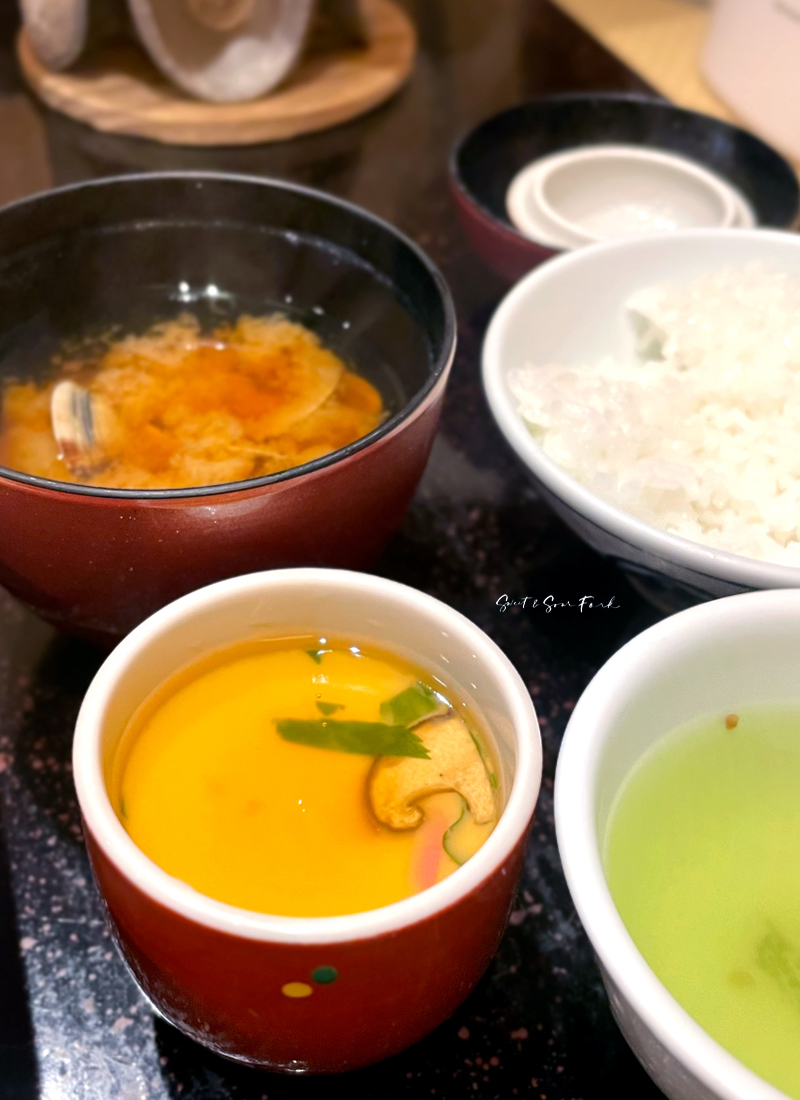
A highlight was a delectable chawanmushi, topped with a savoury seafood stock, and was so delicate and smooth that it put the best panna cotta to shame. There was even a hidden treat of fresh prawns at the bottom!
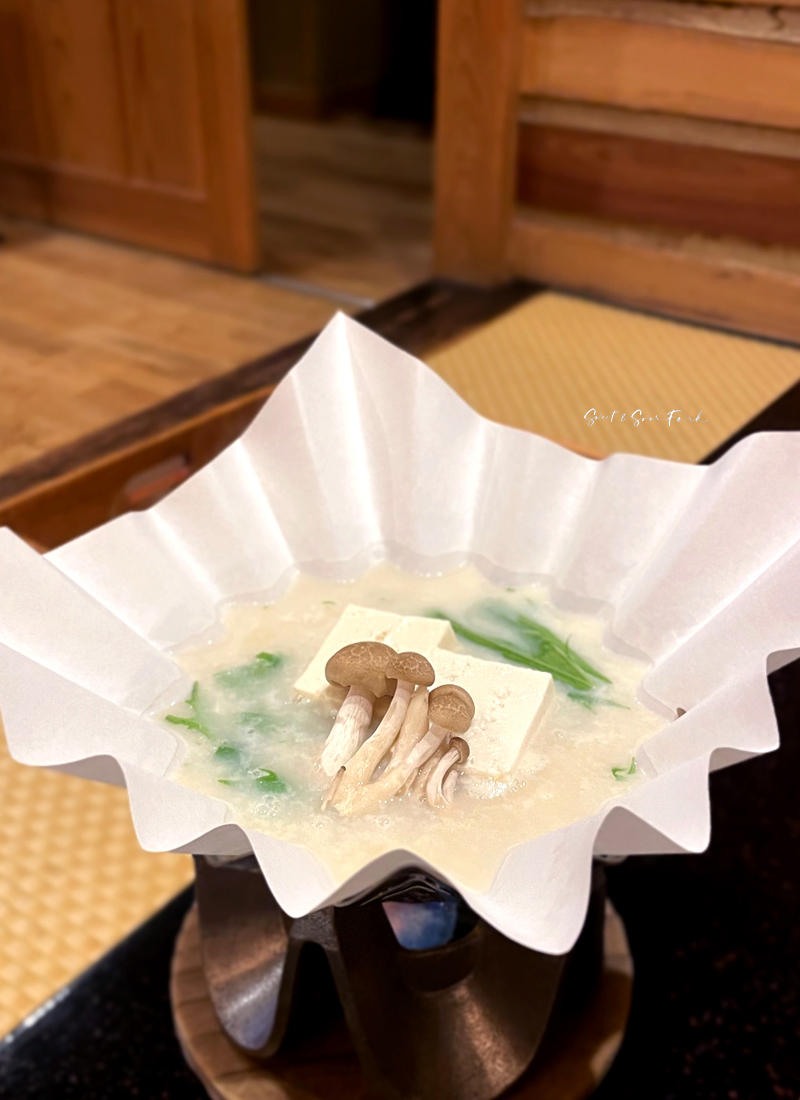
But my favourite dish of all was the light yet creamy tofu soup (once again, cooked on the table brazier), which was super nourishing, especially with the addition of fresh mushrooms and the refreshing bitterness of mizuna.
Other Kinosaki Things
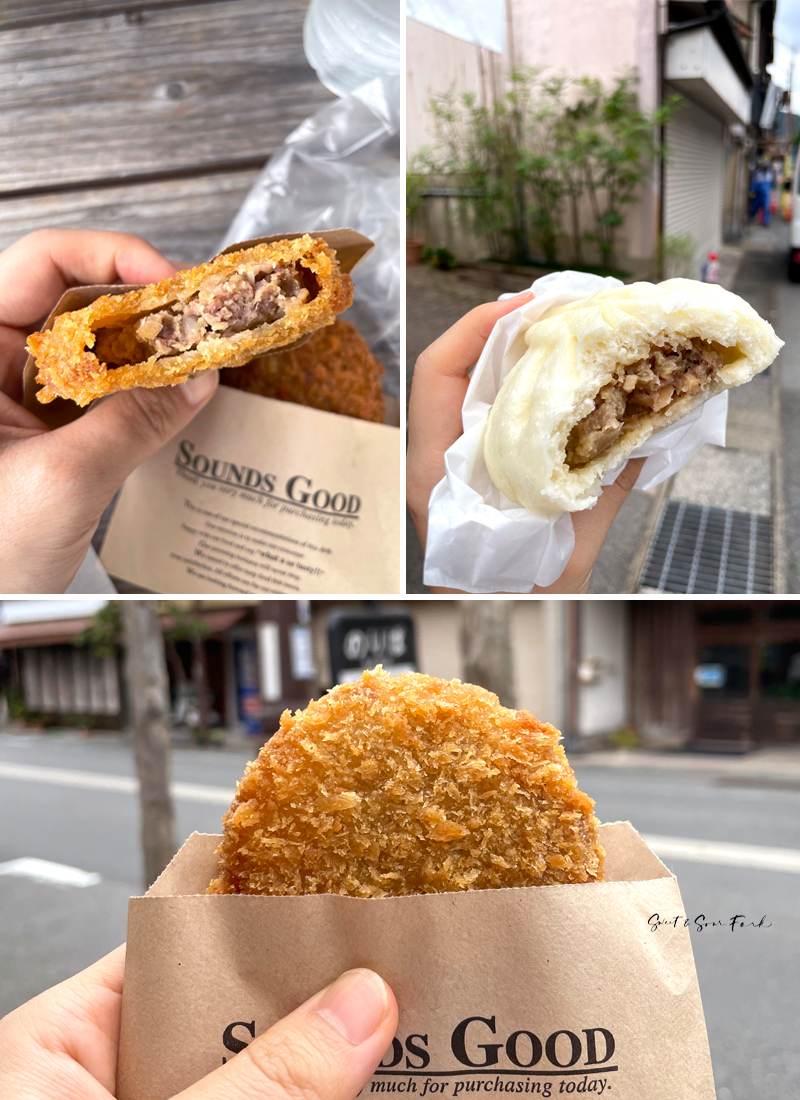
Though our meals in Kinosaki were catered by our ryokan, we still managed to fit in a couple of nibbles. On the day we arrived, we grabbed afternoon tea from Tajimagyu Delica Chaya – a cute little street-side stand specialising in Tajima beef snacks. The Tajima Beef Gyumen (380 yen) were delicious, the buns super soft and fluffy, with a deliciously rich filling studded with crunchy bamboo pieces. The Beef and Onion Croquette (280 yen) was also delicious, the juicy beef patty expertly crumbed and fried. The Beef and Potato Croquette (220 yen) however I’d give a miss; it’s not bad, but it’s just a boring ol’ mashed potato croquette with little bits of beef mince, and was pretty bland compared to the beef and onion variant.

I also nabbed a Sweet Senbei (160 yen) from Terakoya Honpo, who was making them fresh. I really enjoyed the slight savoury smokiness of the rice cracker, contrasting with the crunchy coating of sugar.
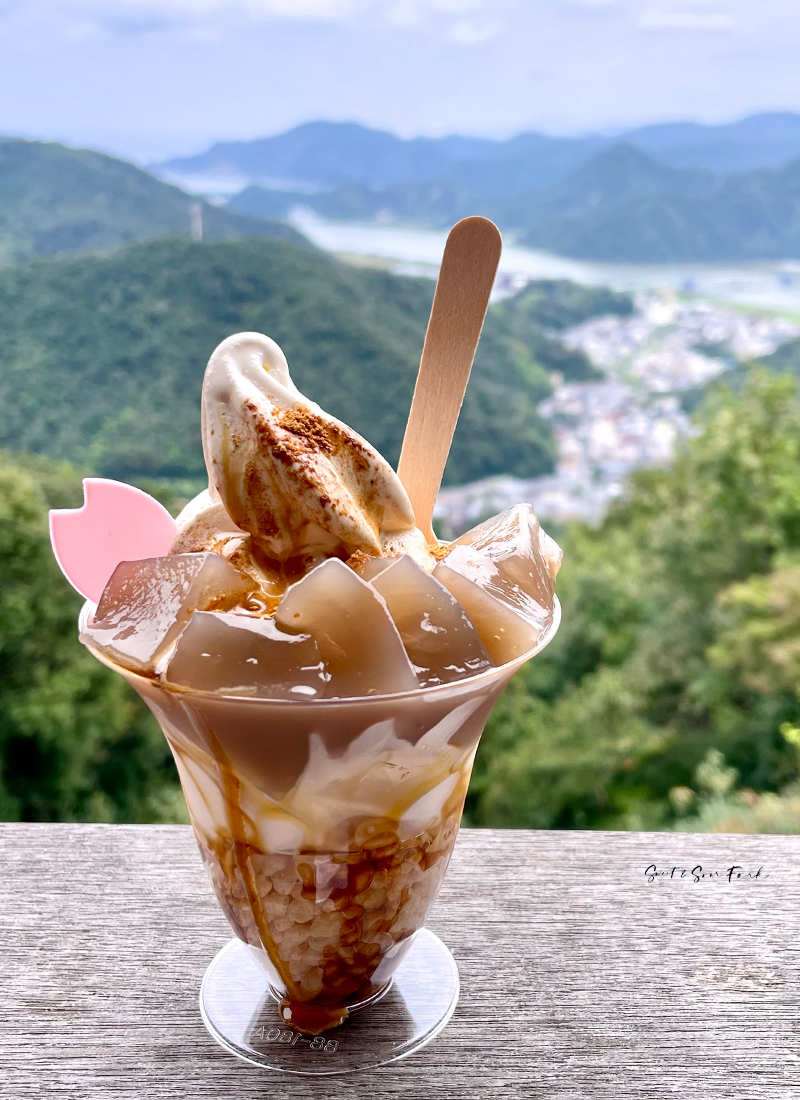
Because we arrived at Kinosaki a little too early for check-in, we decided to climb Mount Daishi, which is just on the outskirts of the town. Unfortunately for us it was way more humid than we bargained for, and we were very literally soaked with sweat by the time we got to the top. Luckily we were greeted by the Miharashi Terrace Café, which not only served up amazing views, but also cold drinks and desserts to combat the heat. The Warabimochi Parfait (650 yen) could not be more welcome – an soft serve sundae garnished with slippery mochi pieces, crunchy puffed rice, and a drizzle of black honey.

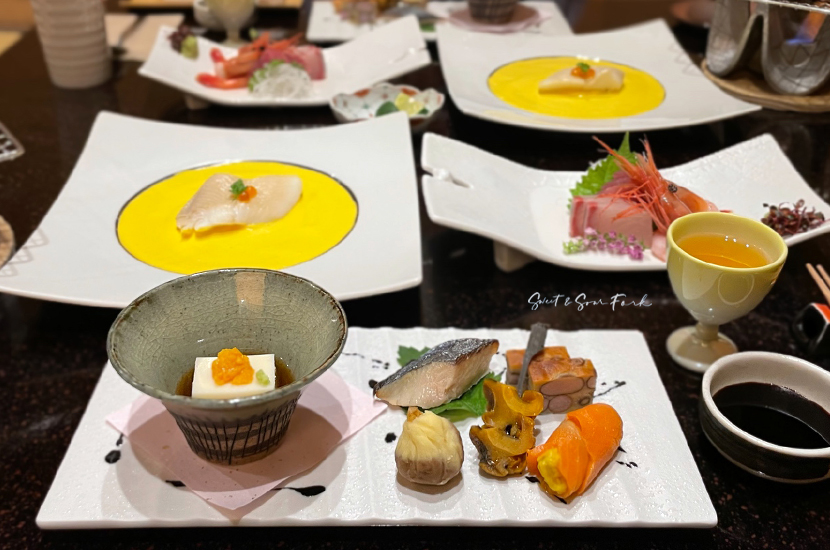
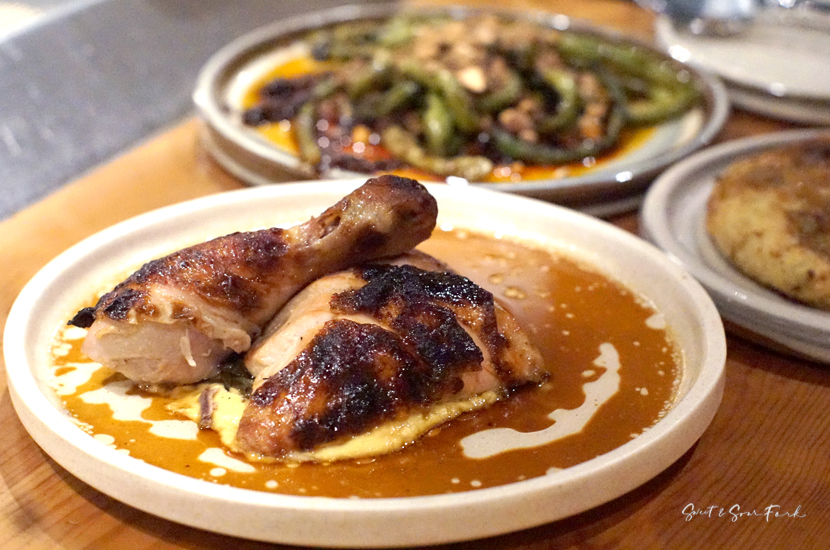

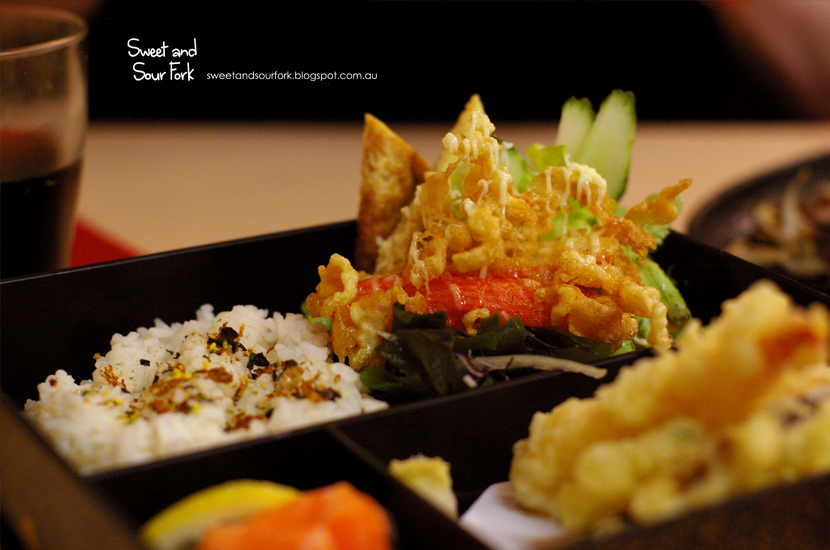
No Comments